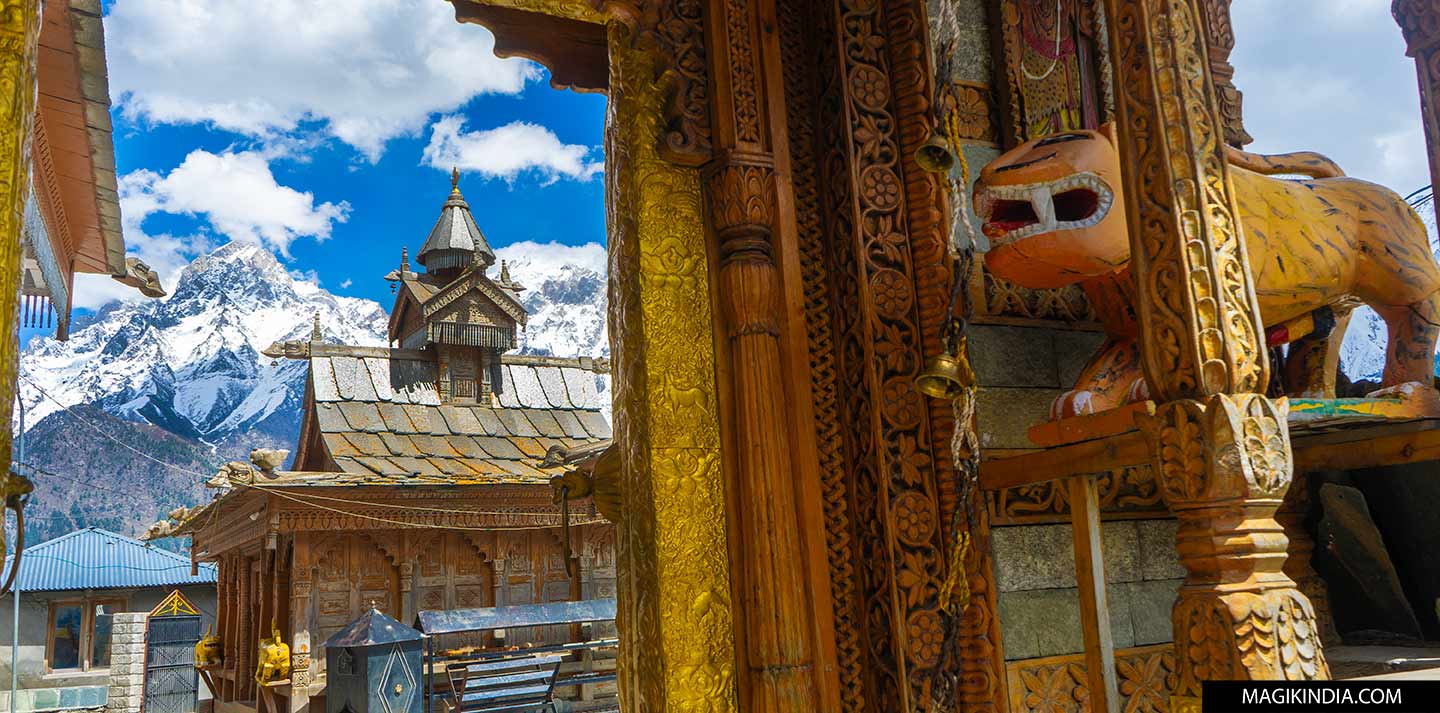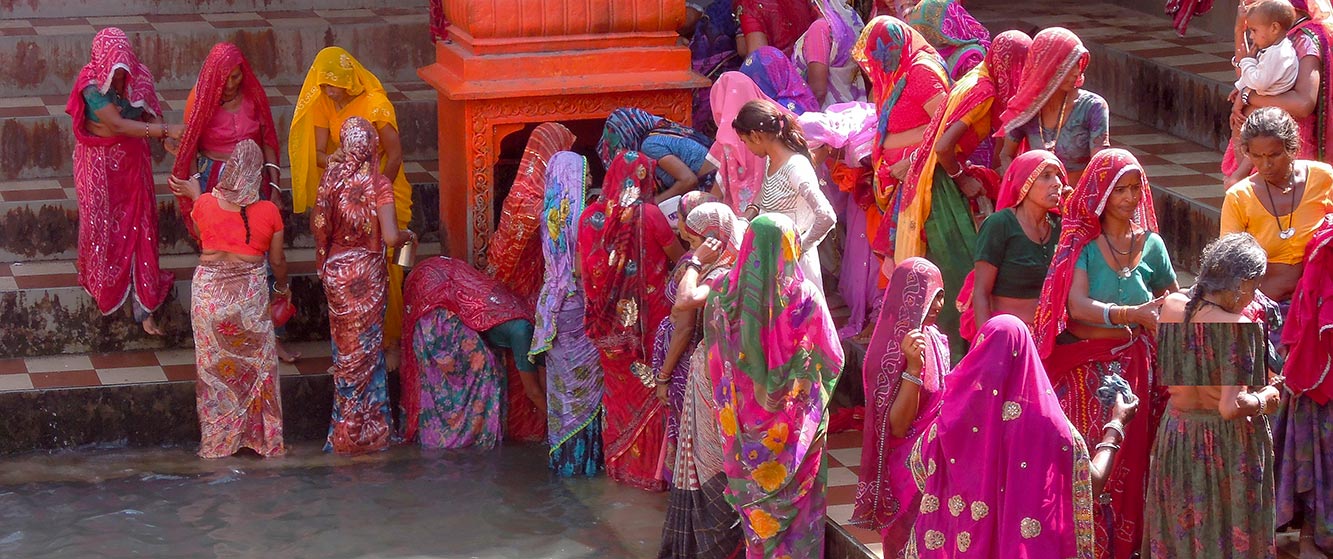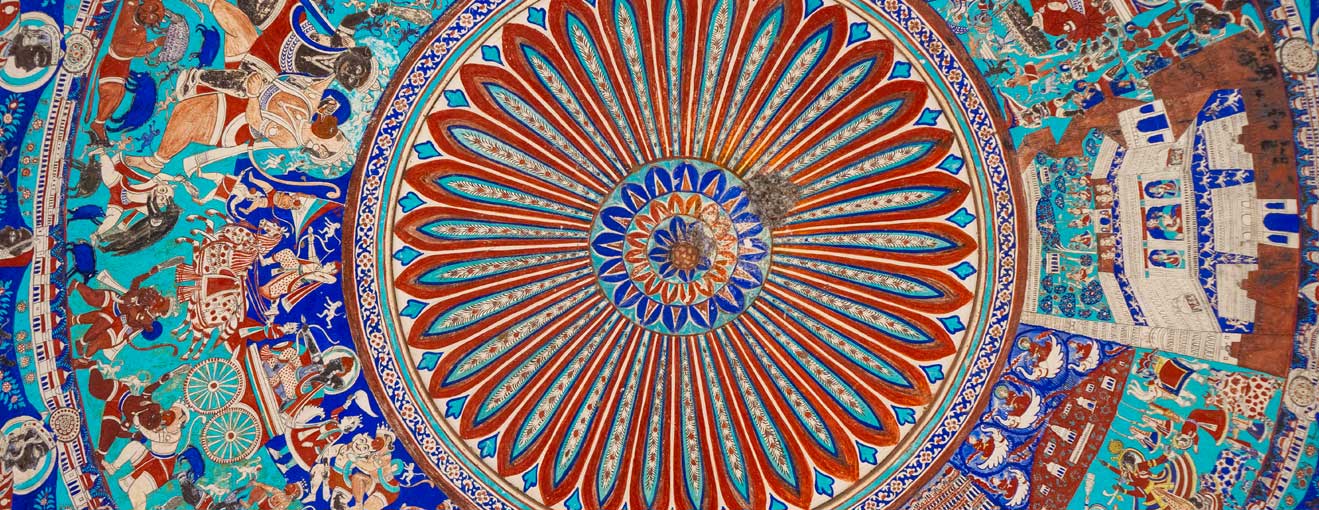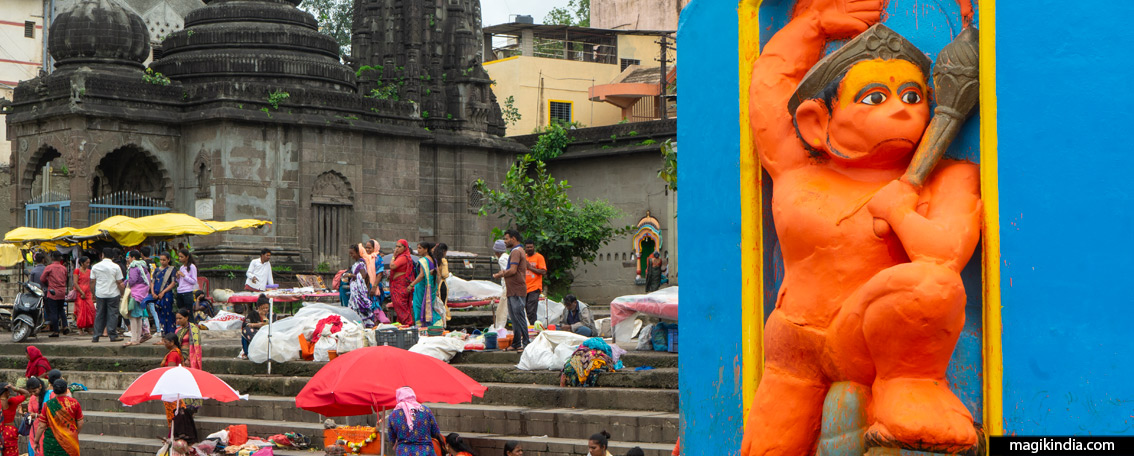
Nasik, temples and vineyards
Nasik, located 160 km from Mumbai, the capital of Maharashtra, is considered one of the holiest cities in India. Not only does it host the famous Kumbh Mela every twelve years, but it is also where Lord Rama of lived for a few years in exile with his wife Sita and his brother Laskhman. On a more hedonistic level, the city is also known as the wine capital of India: the wine estates nestled around Lake Gangapur cultivate all the greatest grape varieties, from Sauvignon to Chardonnay via Merlot and Riesling, to cite only them.
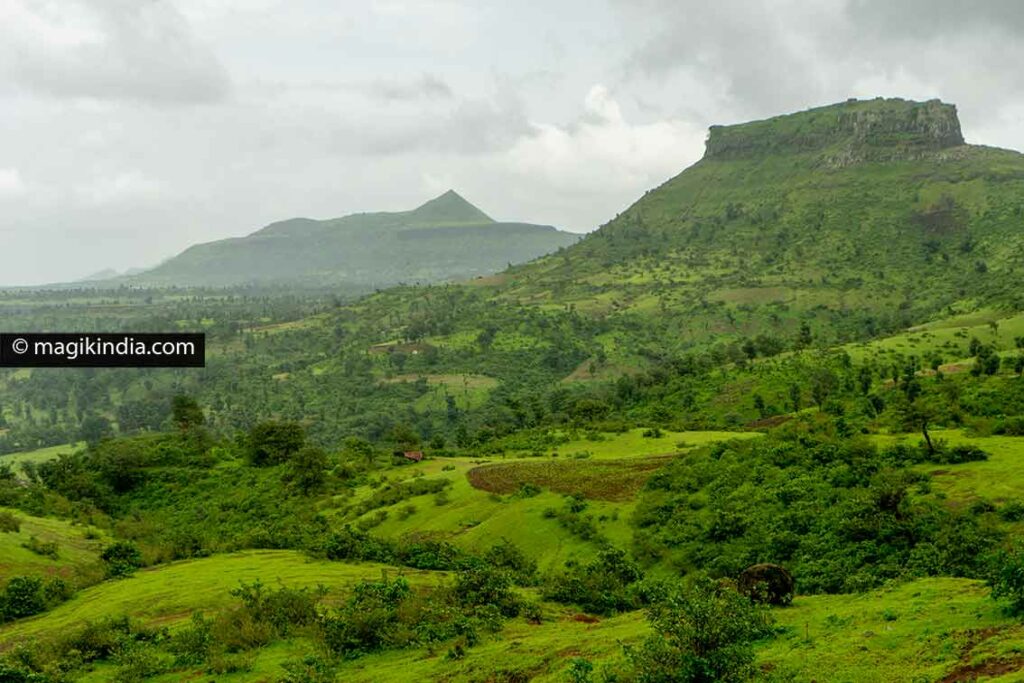
The road that leads us from Mumbai to Nasik crosses the Sahyadris mountain range (the same as Saputara in Gujarat) which is part of the Western Ghats. During the monsoon, these mountains offer a natural spectacle of great beauty with a palette of fluorescent greens and waterfalls that cascade in number from the cliffs.

Nasik being an industrial city renowned for its production of sugar, cotton and oil, its charm comes mainly from its spiritual aura and, all around, from its luxuriant nature.
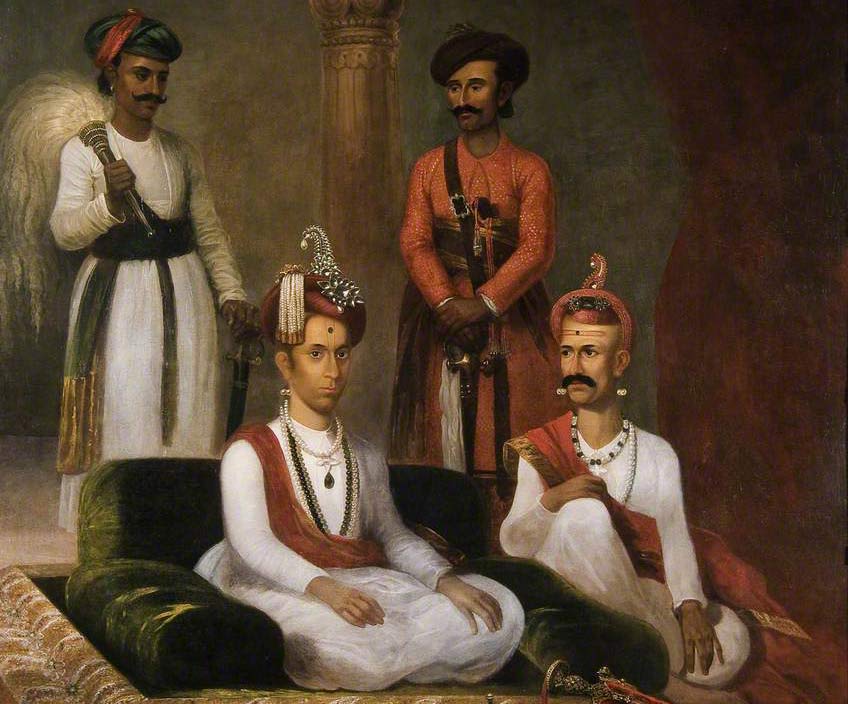
For the historical part, Nasik has seen the succession of different dynasties like Yadavas, Satavahanas, Chalukyas, Marathas, Adilshahi, Nizamshahi and Britons who all left their mark here. However, it was under the leadership of the Peshwas, the Prime Ministers of the Maratha Empire (1679 -1814) that the city would truly flourish. Nasik owe them the construction of a good number of temples such as the Kalaram or the Naroshakrarm and the wada mansions in the old town.
Panchavati, the heart of Nasik
In the local language, Panchavati means, “the region of the five banyan trees”. They are spread over the entire area, one is near Sita’s cave (see below).
Panchavati is the heart of the city of Nasik, crossed by the holy river Godavari. the place is of great religious importance, for according to the Ramayana epic, after their tenth year of exile*, Rama, Sita and Lakshman lived two and a half years on the north bank of the Godavari.
*The first years of exile would have been in Chitrakoot in Madhya Pradesh.
Panchavati boasts ghats and kunds and several temples.
The Ghats & Kunds of Panchavati
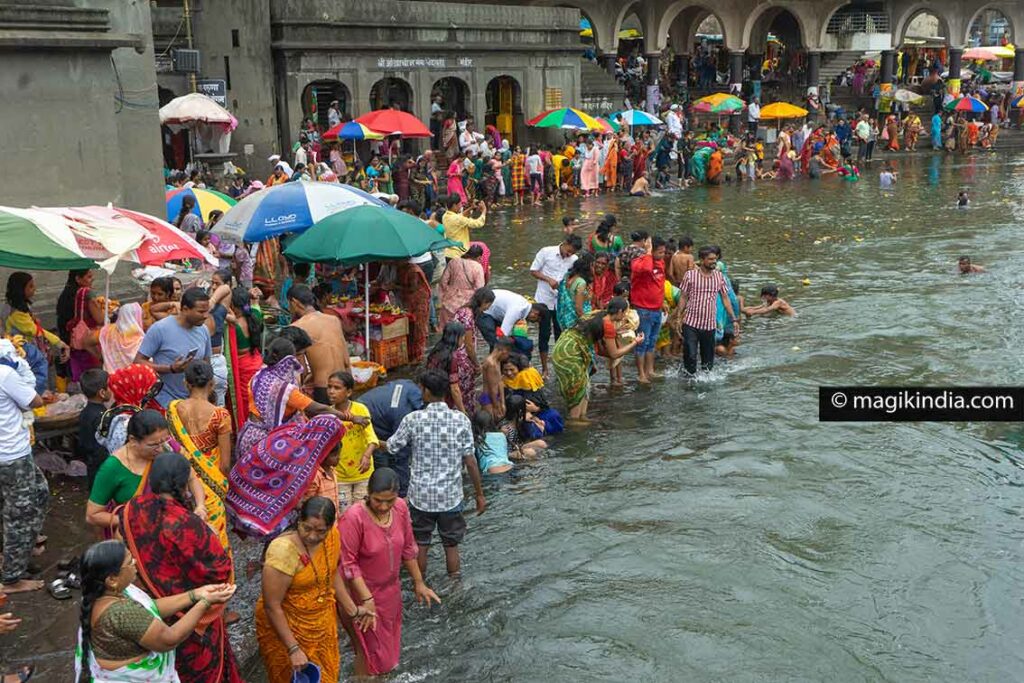
There are several kunds on the banks of the Godavari River, the most important being the Ram kund: it is said that Lord Rama used to bathe there. Ablution done in this kund is therefore considered a great blessing.
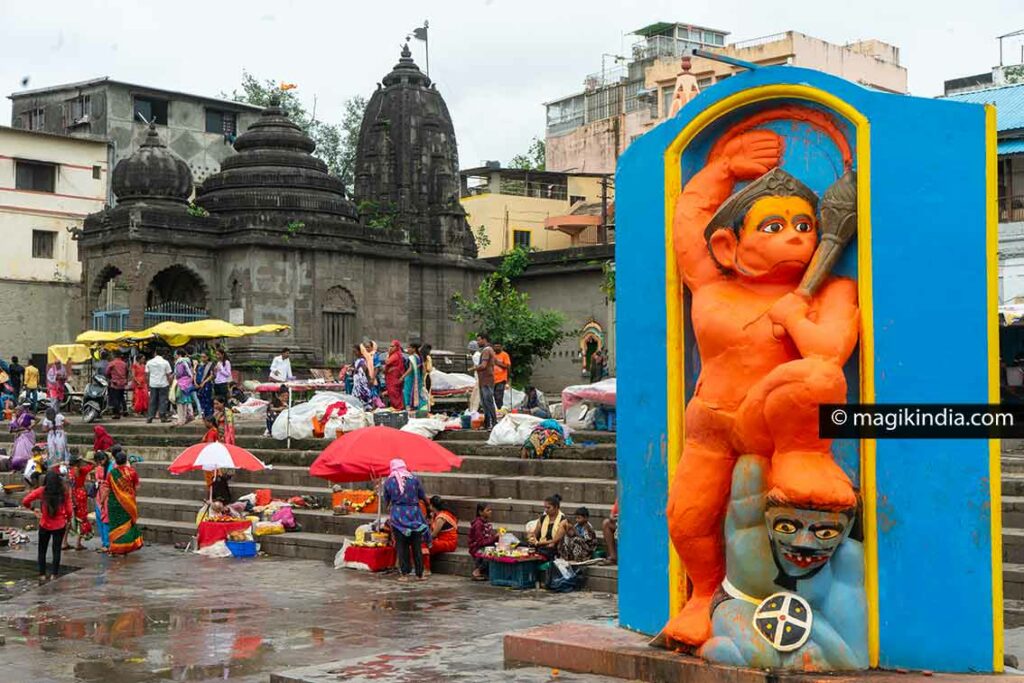
It is also where Lord Rama came to immerse the ashes of his father, King Dashrath. Since then, devotees come to immerse the ashes of their deceased loved ones in Panchavati to free them from the karmic cycle of birth and death. The immersion of the ashes takes place at the Asthivilay kund, a small basin adjacent to the Ram kund which has natural springs which are said to have the ability to dissolve the ashes very quickly.
The ashes of great personalities like Gandhi ji, Pandit Nehru, Indira Gandhi, Y.B. Chavan to name a few, were immersed in the Ram kund.
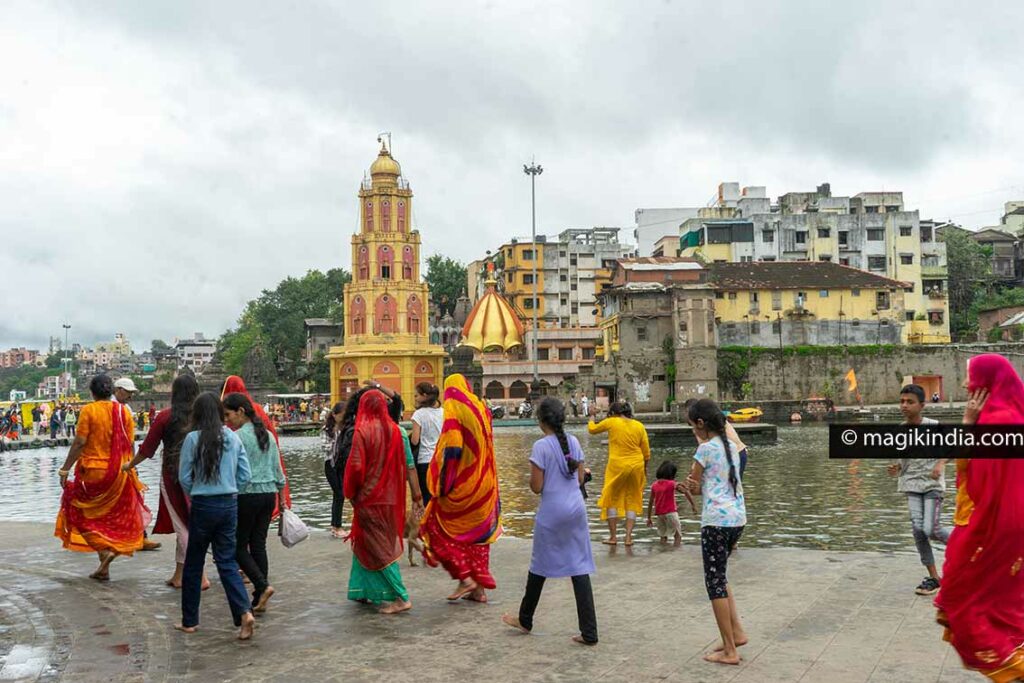
Hindu tradition also states that a drop of amrita, the nectar of immortality, fell on the Ram kund. This is how the Kumbh Mela, the largest spiritual gathering in the world, is held here every 12 years. The next one will take place in October 2026.
KNOW MORE ABOUT THE KUMBH MELA
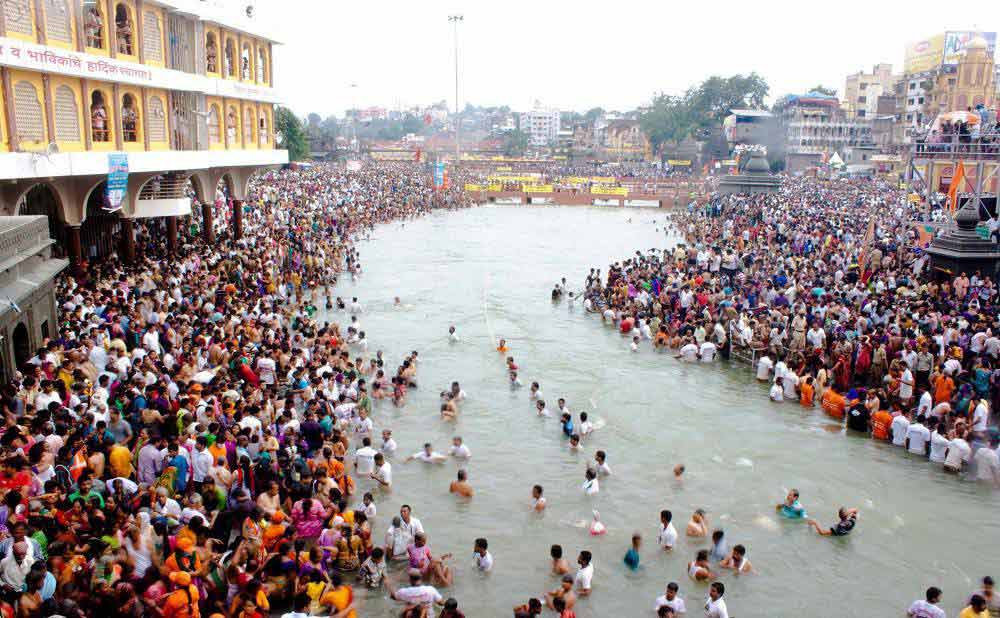
Naroshankar Temple (Panchavati)
In addition to the kunds, there are a plethora of temples on the banks of the Godavari. Naroshankar Temple stands out. Although it is damaged, it has a special charm.
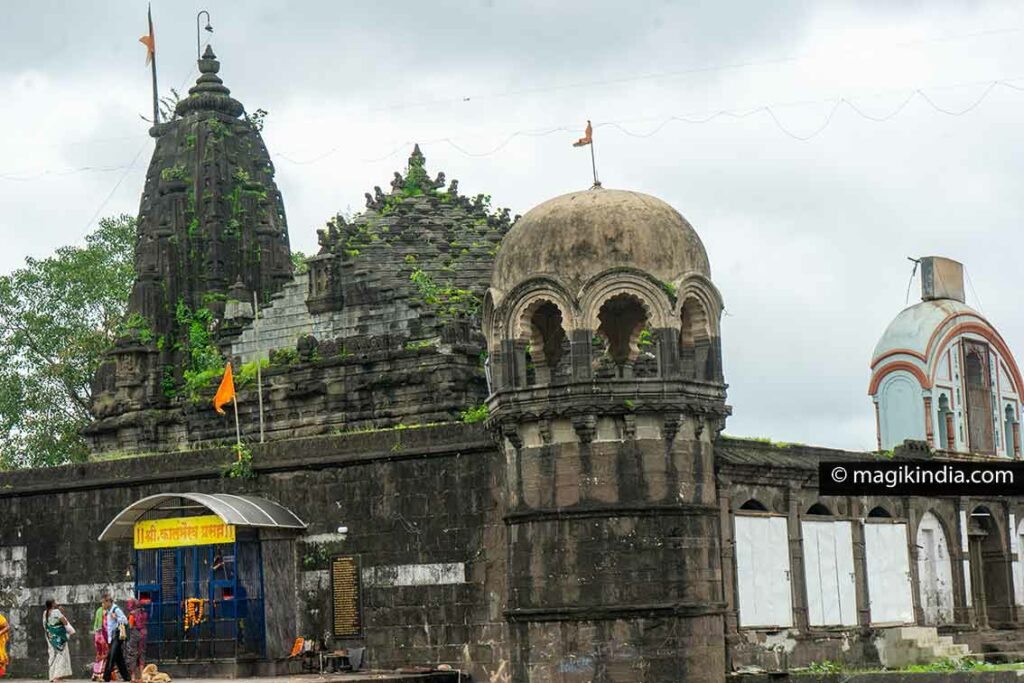
The temple takes its name from Naroshankar Rajebahaddur, commander-in-chief of the Peshwa army who had it built in 1747.
First particularity, it is surrounded by a fortified wall with turrets crowned with a “chhatri” style roof (in the shape of an umbrella) at the four corners of the wall.
The second particularity of the temple is its main entrance which has a bell tower. The famous bronze bell, called “Naroshankar Bell” is a kind a memorial recalling the victory of Prince Chimaji Appa Peshwa over the Portuguese. Following the capture of Vasai Fort near Mumbai, the fort’s Portuguese church bell was removed and brought by elephant to Nashik. It was then offered to Naroshankar as a reward for his bravery in this battle against the Portuguese.
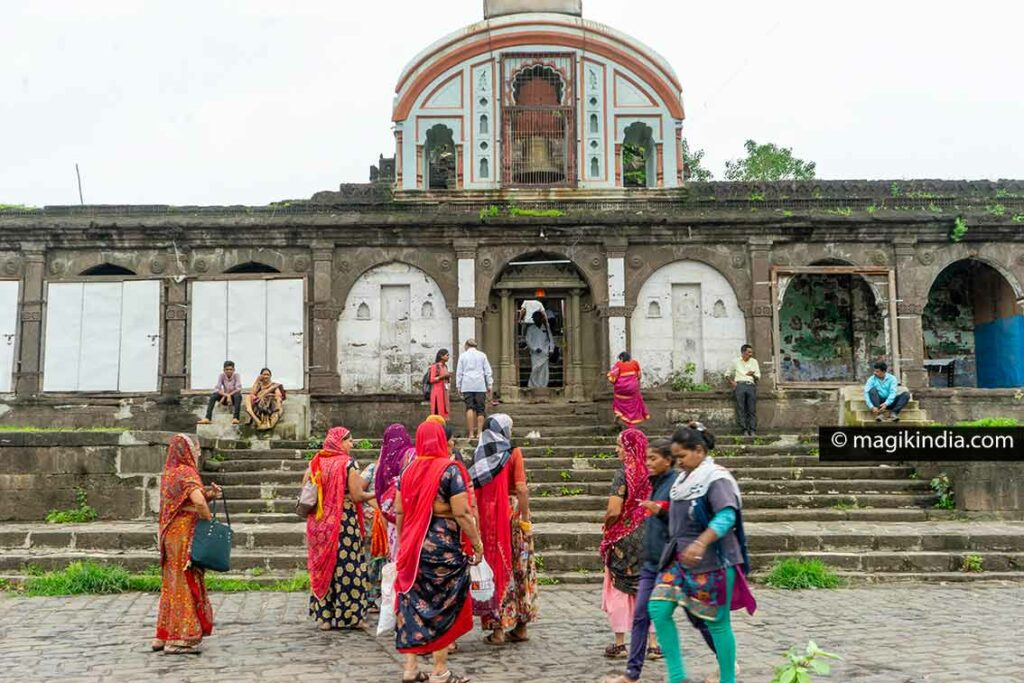
While the upper part of the temple is in poor condition, the lower part has beautiful jagged carvings with several statues of Shiva as Kala Bhairava (fierce version of the god) in the four directions.
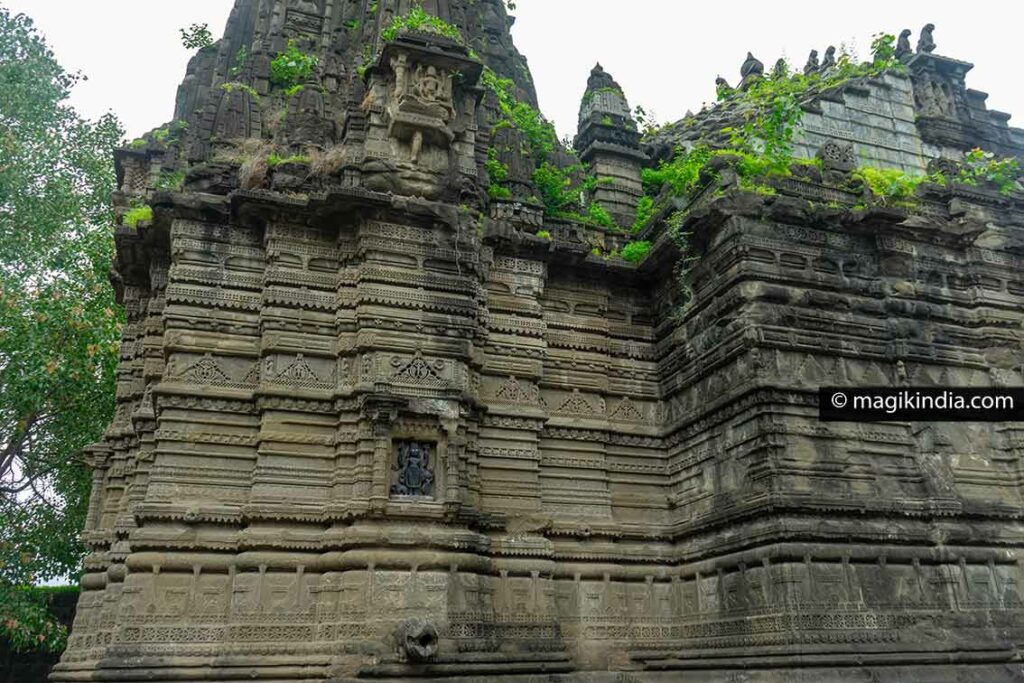
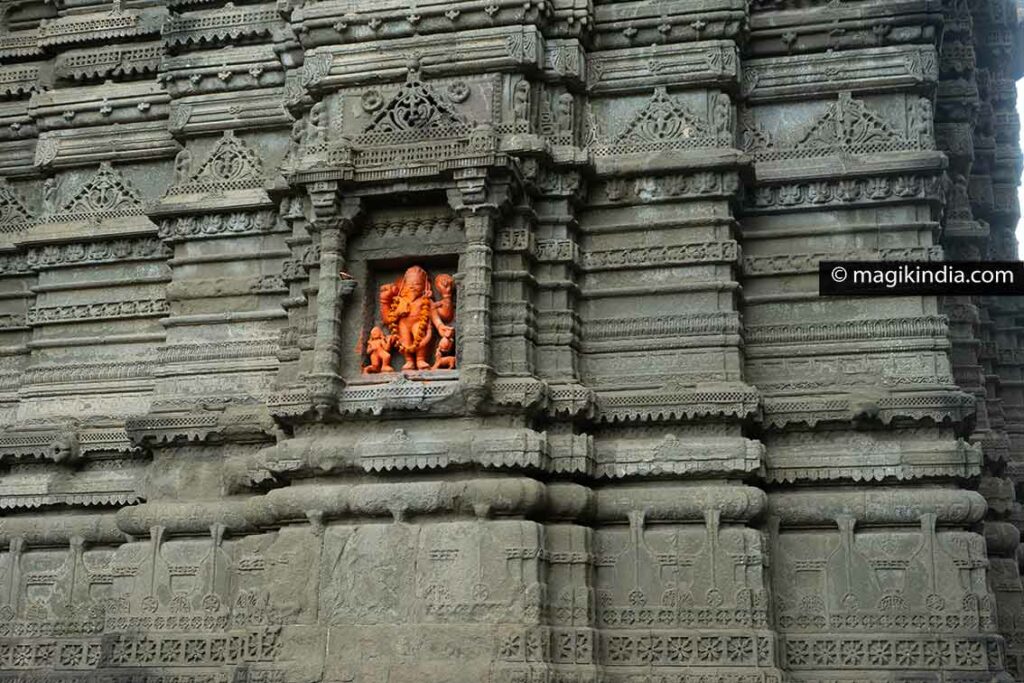
The interior of the temple and particularly the entrance to the garbhagriha is remarkable with fine sculptures of trees of life, mythological animals and peacocks.
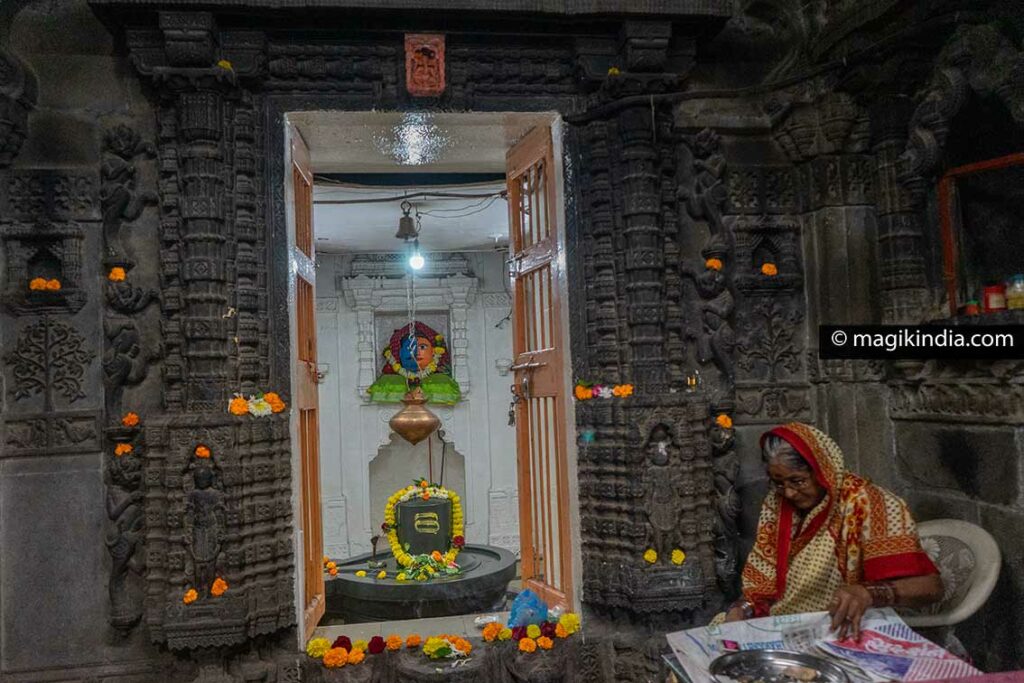
Kalaram temple
Built in 1790 by Sardar Odhekar of the Peshwa dynasty, Kalaram is one of the most important Hindu shrines in Nasik. The temple takes its name from the statue of Lord Rama which is black (kala = black in Hindi), the two other statues of the main sanctuary, those of Sita and Lakshman are also in black sandstone.
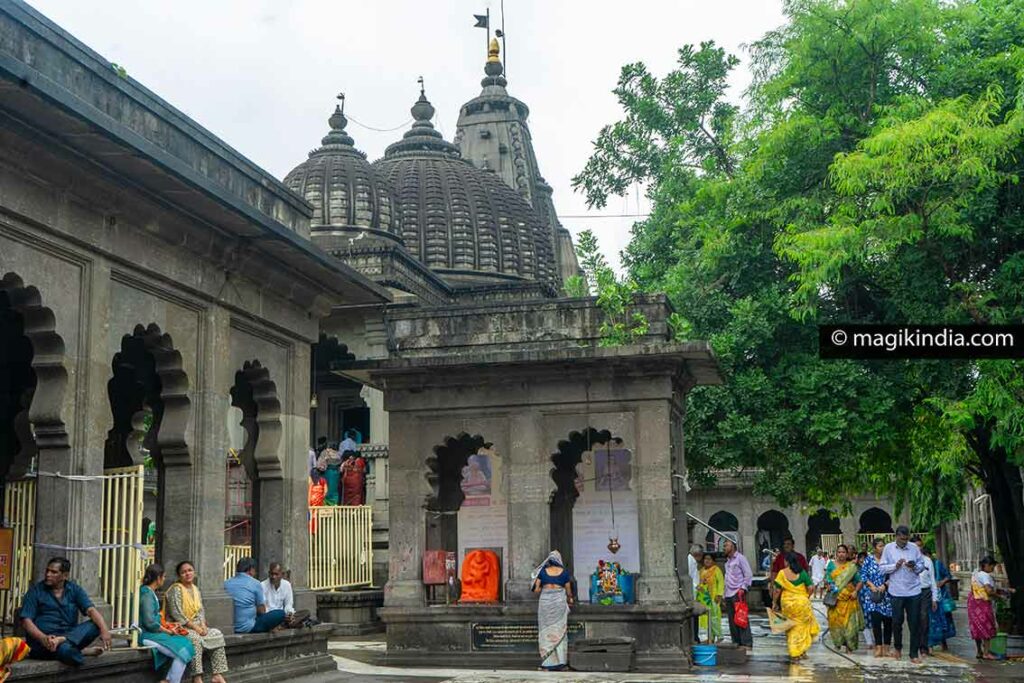
It is said that the original temple is thousands of years old and was destroyed during the Muslim invasions. The Rama statue is said to have been hidden in the Godavari River during Mughal rule and retrieved by Sardar Odhekar who saw it in a dream. He would then have decided to build this temple to welcome the statue again.
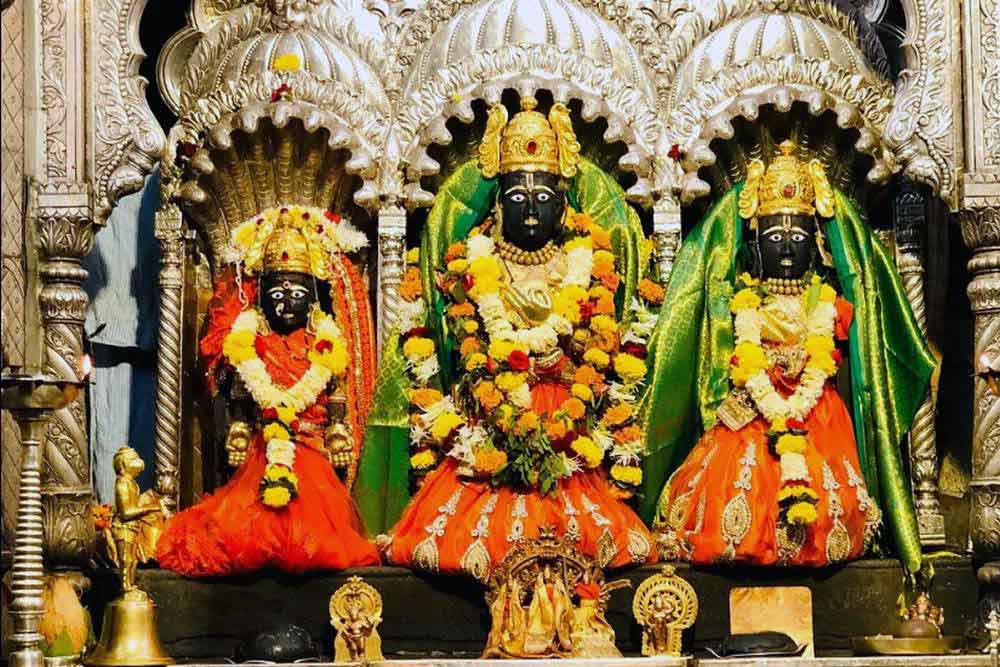
The specificity of the temple is that it was built with black stones brought from the hills of Ramshej near Nashik.
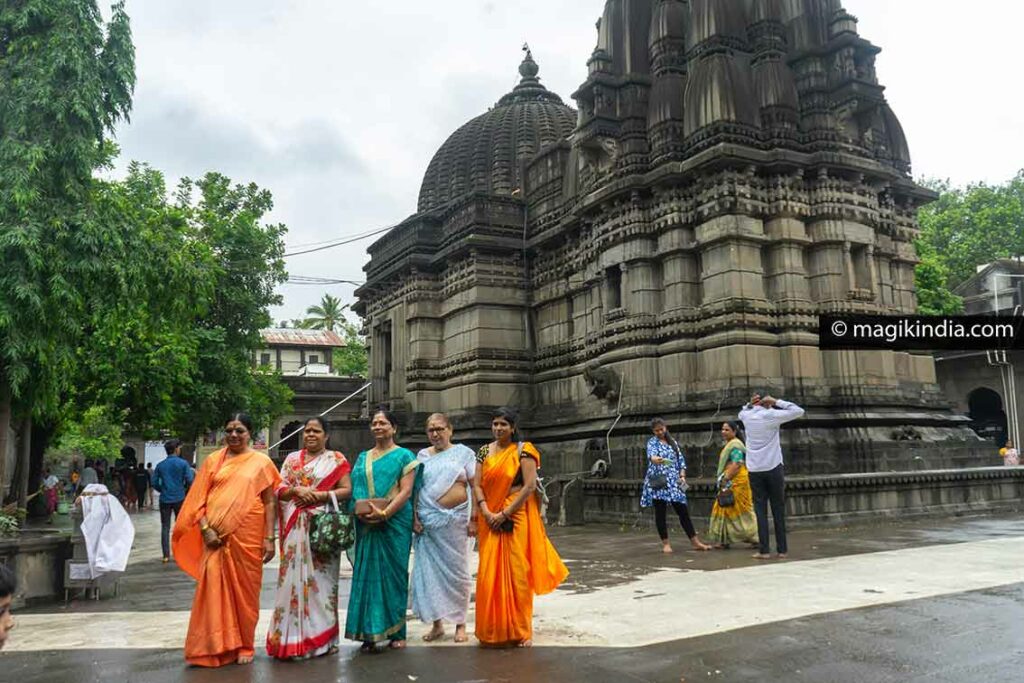
Descending from Kalaram, we come across the old town where elegant mansions seem to stand the test of time. The Peshwas who wanted to develop the banks of the Godavari, selected the best craftsmen and had beautiful houses built in the Wada style.
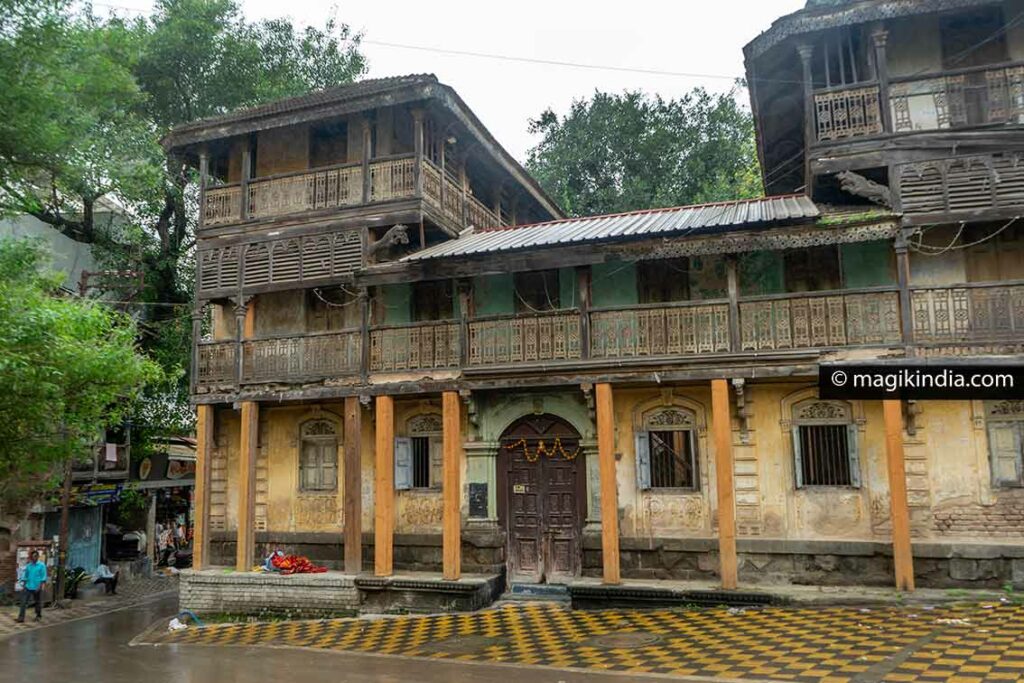
The wadas are vernacular bioclimatic structures built around a “chowk” or central courtyard in the manner of the havelis of Rajasthan. They have wooden verandas for ventilation and a pillared entrance.

Sita Gufa
Climbing a few meters from the temple of Kalaram, we come across the “Sita Gufa” or cave of Sita.
This cave is another important place associated with the Ramayana, it is said to be where Ravana, the demon king of Lanka, kidnapped Sita in revenge for Lakshman who cut off his sister Surpanakha’s nose

After about an hour of waiting in single file, we reach the cave via a very narrow corridor (we have to squat down) which seems to go down to the center of the earth. Don’t go if you are claustrophobic!

The black sandstone statues of Lakshmana, Rama and Sita sit enthroned at the bottom of the cave. after this cave, we find another one with the lingam which would have been venerated by Sita.
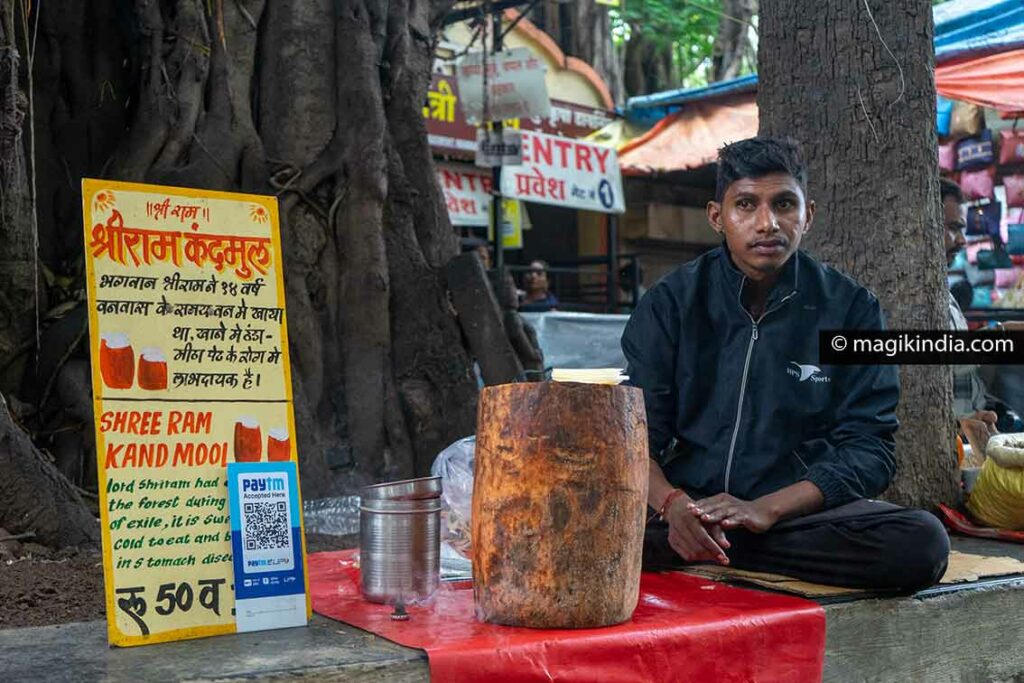
Just outside the cave, under one of the five banyan trees, a street vendor offers a few slices of “Ram Kandmool”. Kandmool is a cylindrical root vegetable (resembling a log) from the agave family that is said to have been part of the menu of ascetics who once meditated in the forests. Similarly Rama, Sita and Lakshman consumed it regularly during their exile.
Tapovan
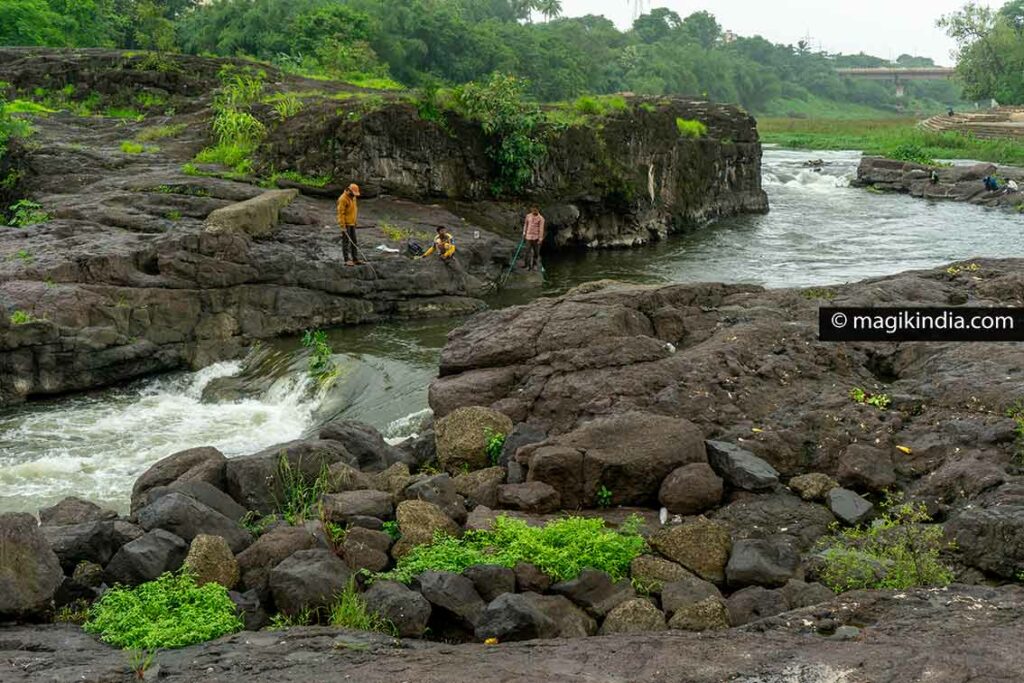
Tapovan which literally means “penitential forest” is located a little ahead of Panchavati. It is said to be where the sages centuries ago meditated in search of enlightenment.
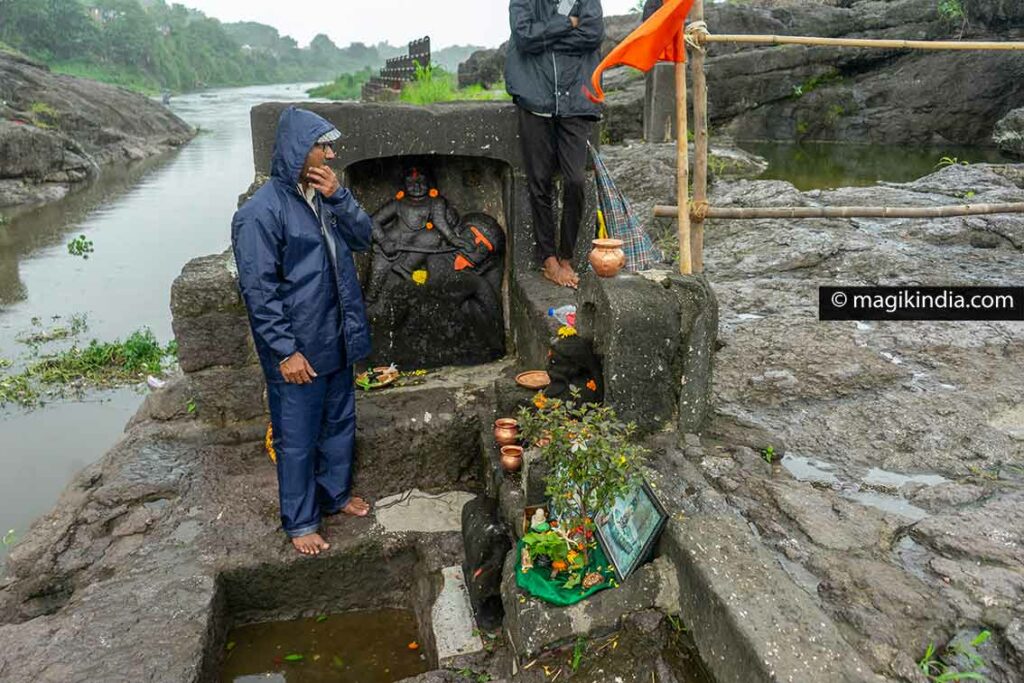
Tapovan is also said to be the place where Lakshman cut off the nose of Shurpanakha, the sister of the king of Lanka, Ravana. Hence, the name, Nashik, derived from the Sanskrit word ‘nāsikā’ which literally means ‘nose’.
In the Ramayana, Surpanakha is a widow who used her shape-shifting powers in an attempt to seduce Ram and Lakshman. She also attacked Sita, infuriating Lakshman who mutilated her to teach her a lesson.

Tapovan is made up of caves and small temples as well as sacred kunds known as Brahmatirth, Shivtirth, Vishnutirth and Agnitirth where the three heroes of the Ramayana came to bask there.
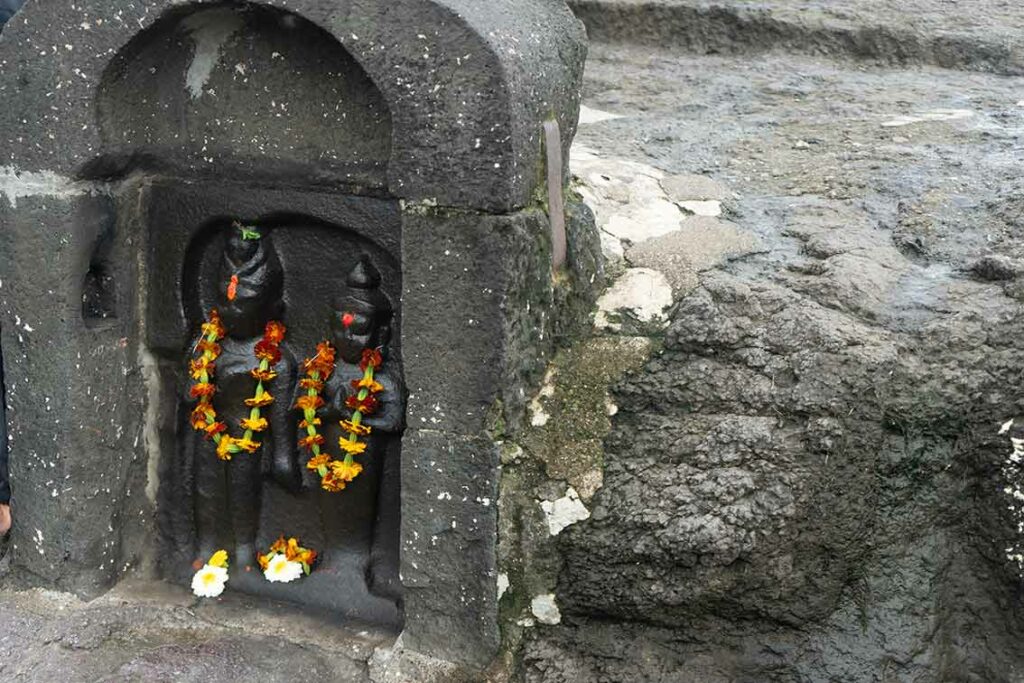
Opposite Tapovan, a colorful temple-museum traces the story of Rama’s exile. Tourists often pose in front of the imposing statue of Hanuman.
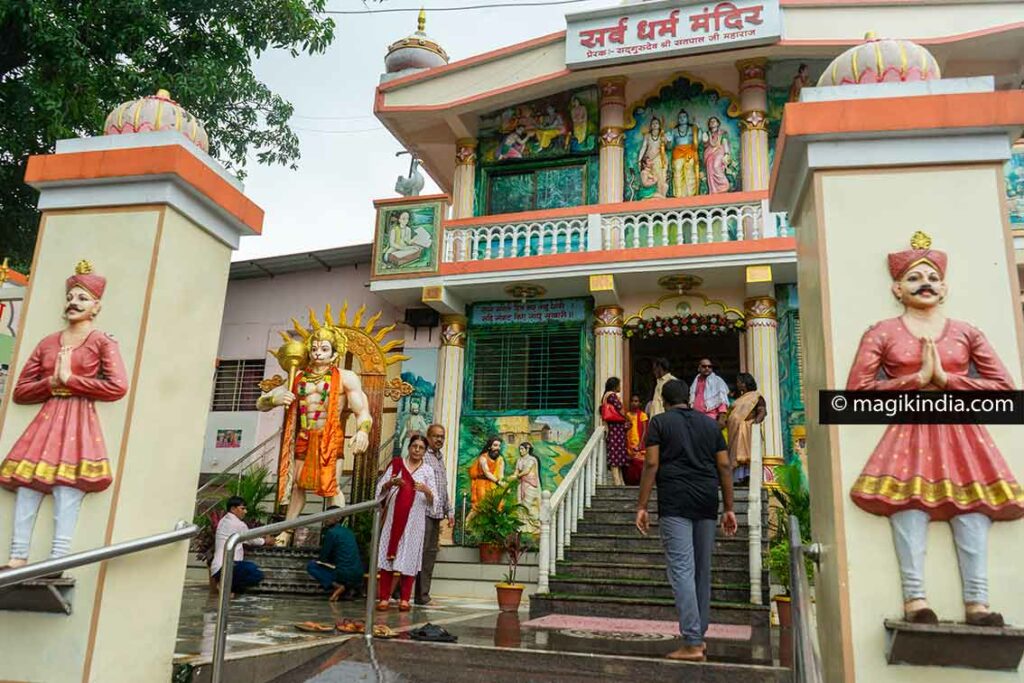
Someshwar waterfalls
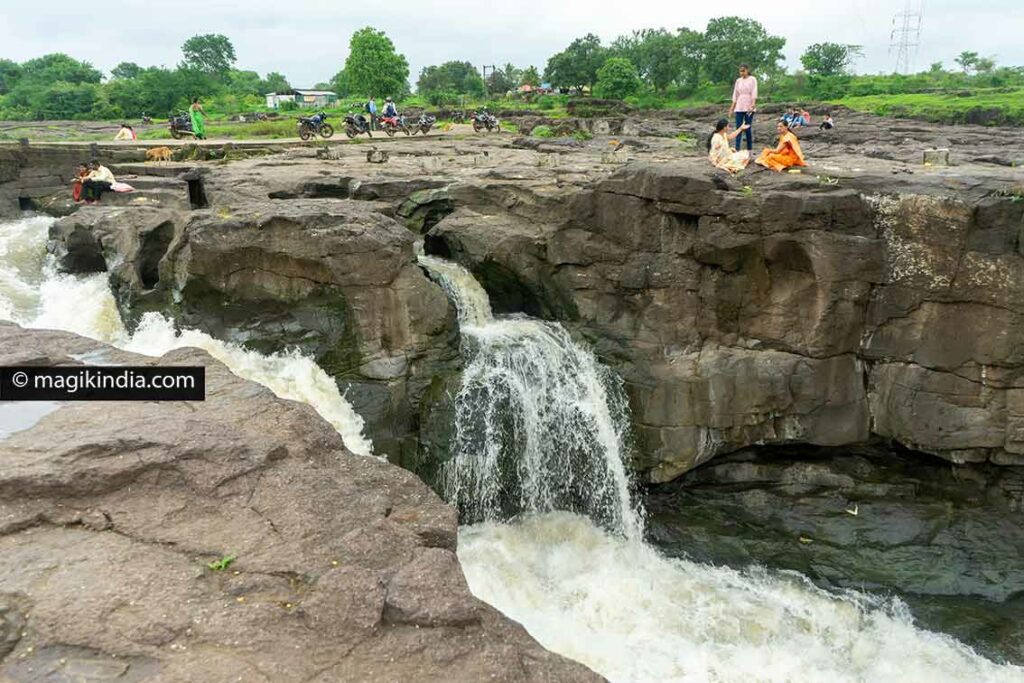
The Someshwar waterfalls are about ten kilometers northeast of Panchavati. It is a popular place enjoyed by Indian families and young couples. At this place, the sacred Godavari river flows into a canyon with a height of 10 m. To be seen preferably during the monsoon for a more spectacular side.
About a kilometer before these waterfalls, one can visit the temple of Someshwar, one of the oldest in Nasik. It is dedicated to Shiva. A string of temples surround it.
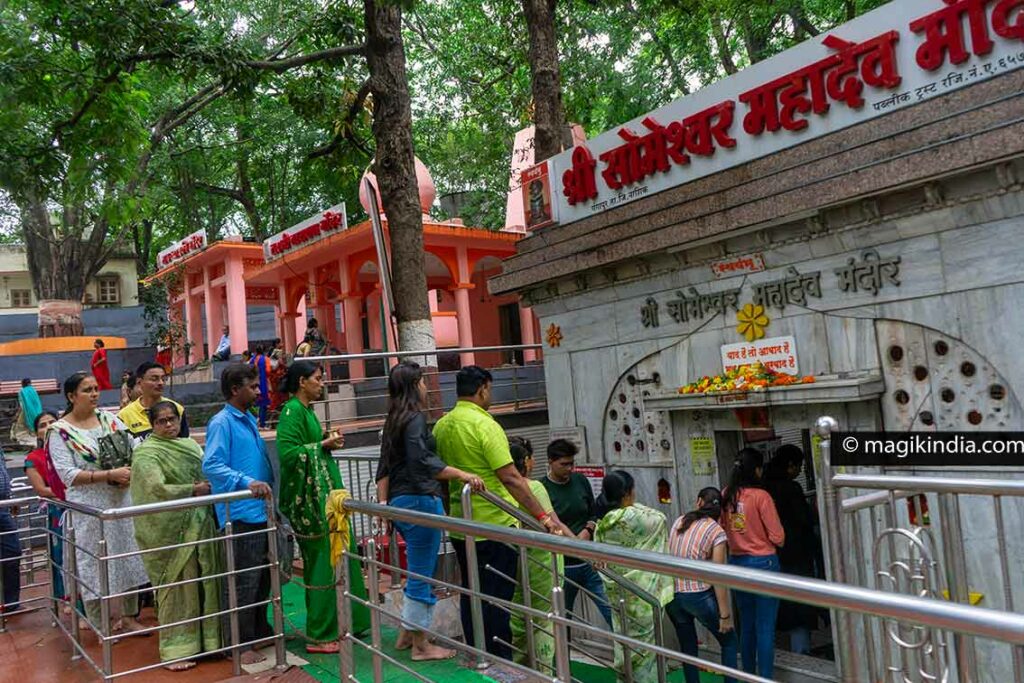
Nasik vineyards
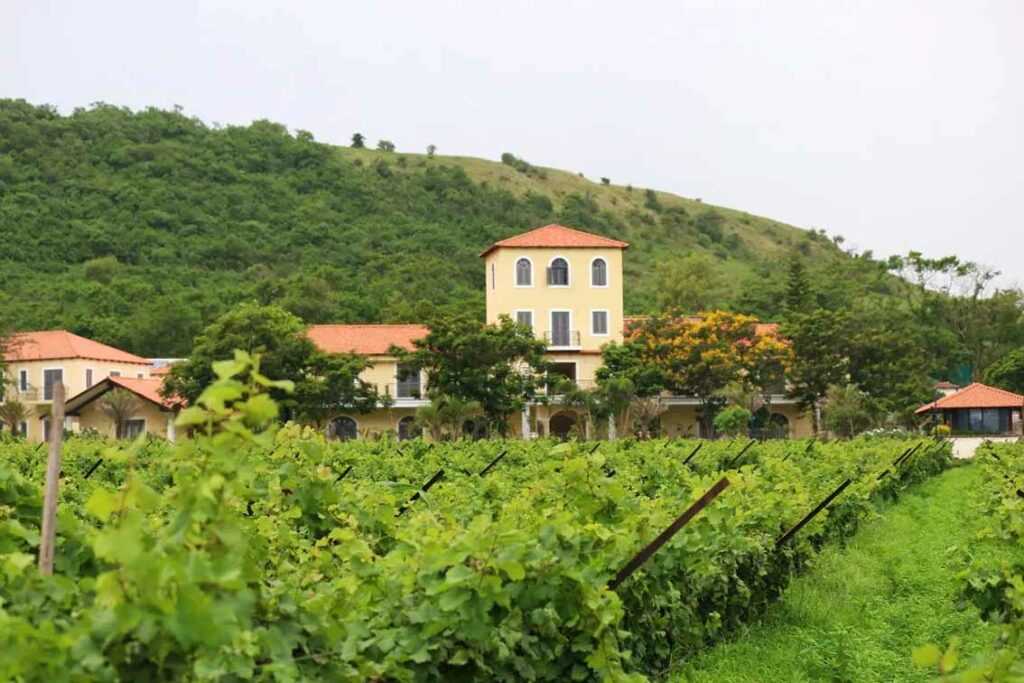
Nasik has another center of interest: its wine estates.
There are about thirty of them and, therefore, Nashik is also known as “the wine capital of India” or “the California of India” in reference to the Napa Valley. Nashik’s contribution to the Indian wine market is 80%; this is mainly due to the region’s climate (hot days and cool nights) and the well-drained soil perfect for producing grapes of different varieties.
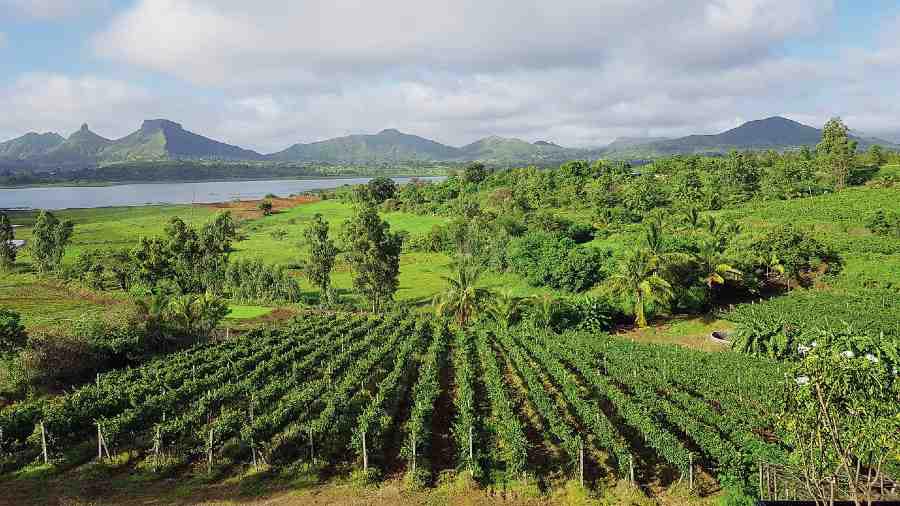
The Sula Estate was the first company to establish a winery in Nashik in 1999. In addition to wine tasting, the estate has two boutique accommodations (The Source and Beyond Sula) with stunning views of the vineyards and Gangapur Lake.
Around Nasik
Pandav Leni

A must-see destination around Nasik is Pandav Leni, a group of 23 Buddhist (and one Jain) caves created between the 1st century BCE to the 6th century CE. They are located on a hill near the main Nashik-Mumbai road. The caves reflect the excellence of the Buddhist art of this period, just like those, a little further on, of Ajanta and Ellora.
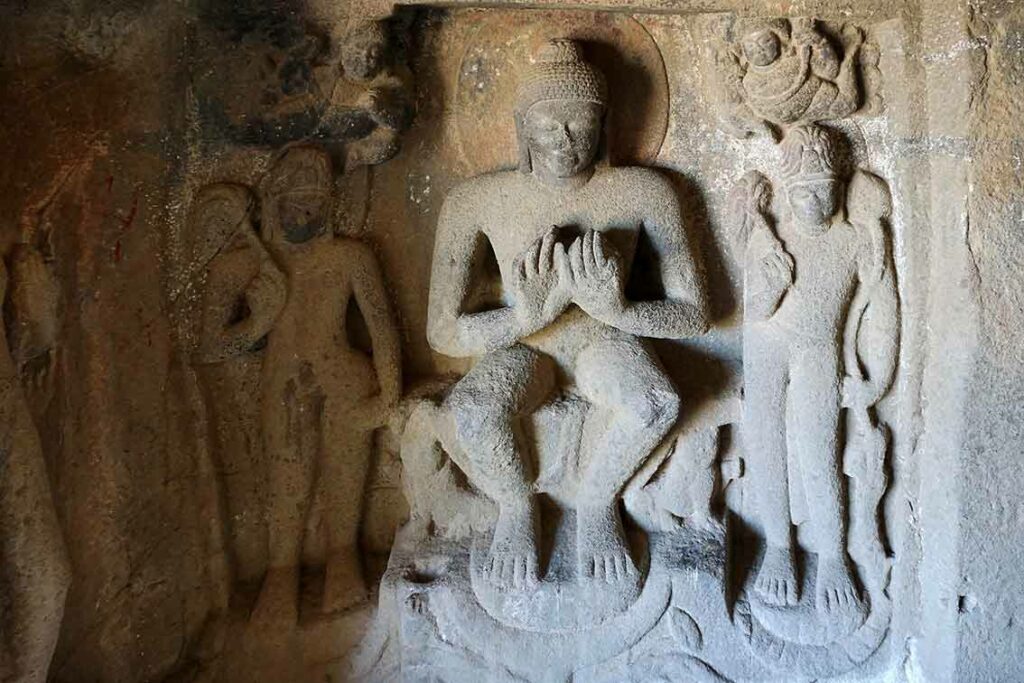
Trimbakeshwar temple
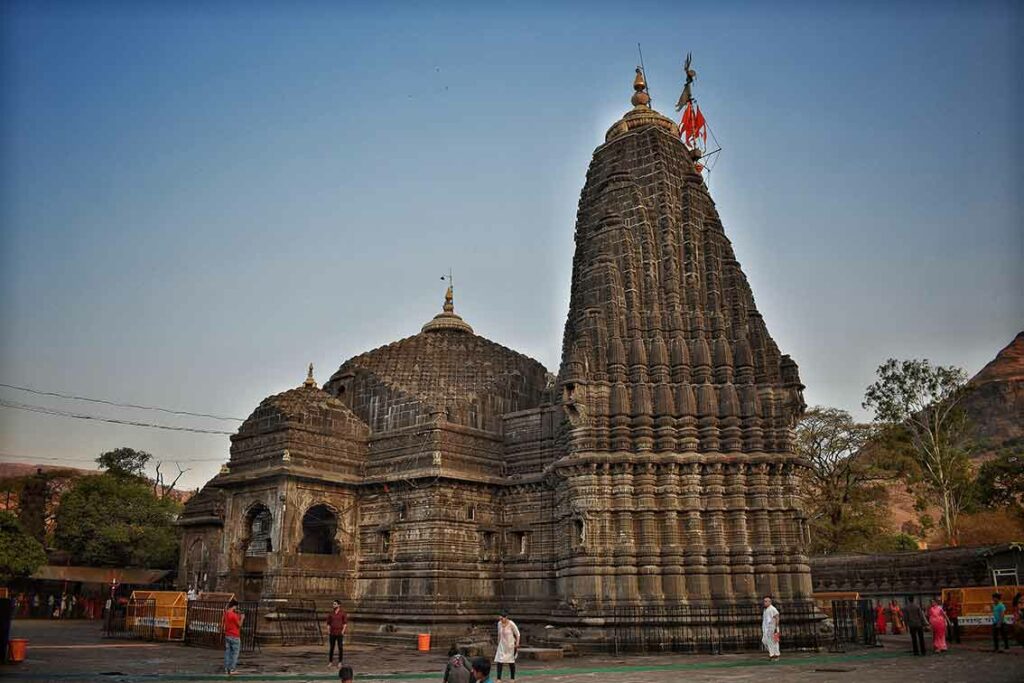
Trimbakeshwar is the temple of the “three-eyed lord”, one of the twelve highly revered Jyotir-lingams or lingams of light. It is located in the village of Trimbak, 30 km from Nashik. An essential stopover for Hindu pilgrims going to Nasik.
KNOW MORE ABOUT THE JYOTIR LINGAMS
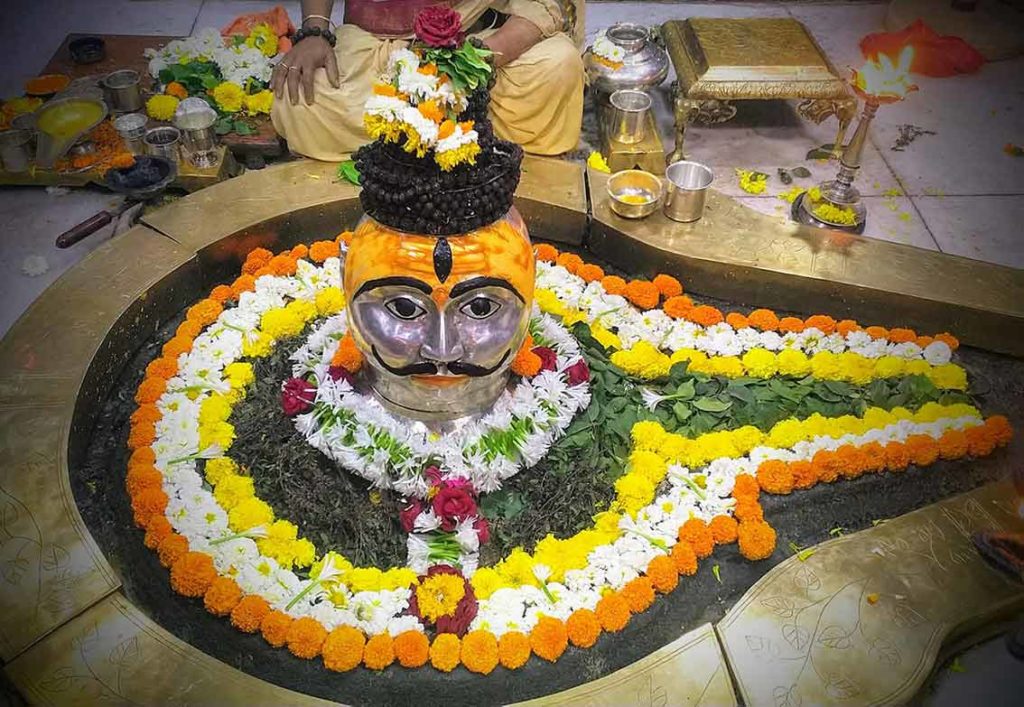
The temple is overlooked by the Brahmagiri hill which, during the monsoon, offers a grandiose spectacle with a multitude of fine waterfalls cascading down the cliffs.
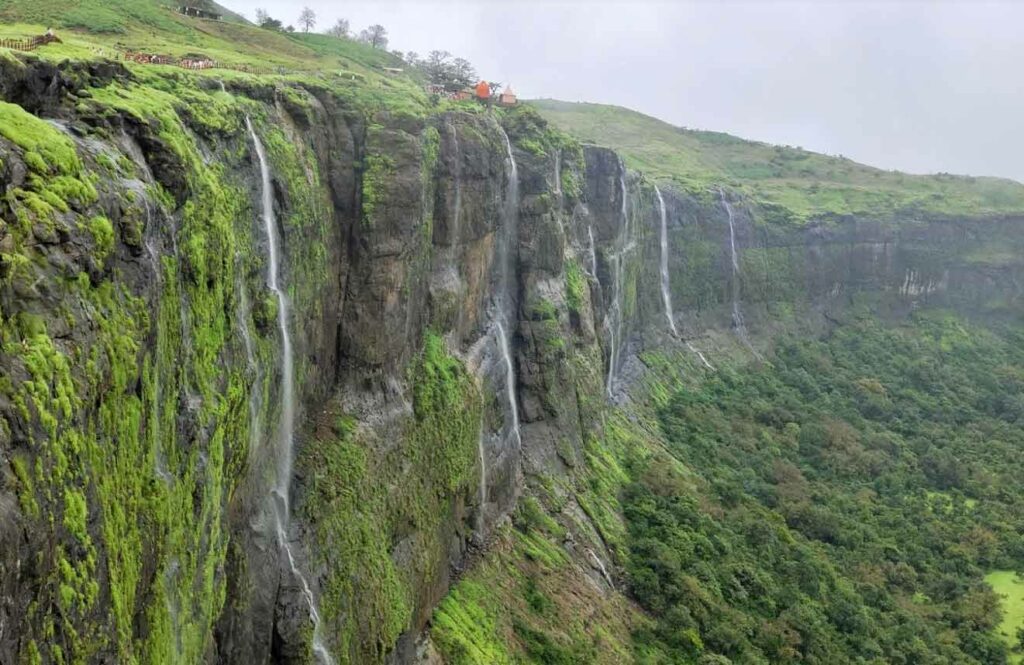
Brahmagiri Hill is also famous for being the place where the Godavari River originates. A hillside trek (500 stairs – 2 km) of easy to moderate level, leads us there. The view over the valley is splendid and being at the source of a river is always a magical moment.
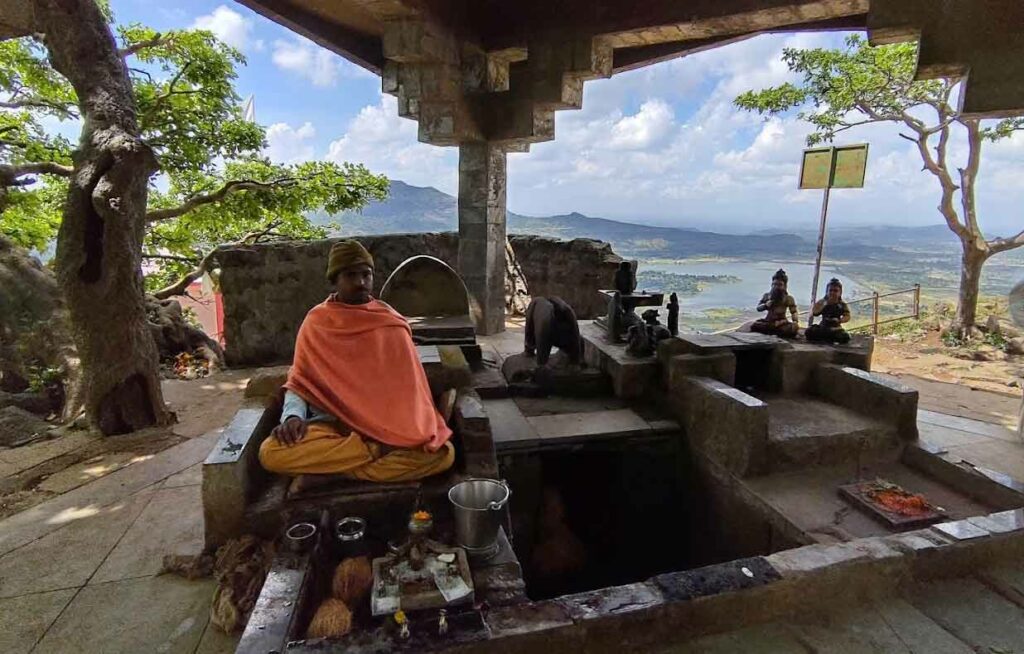
Practical information
When to go there? For lovers of lush nature and trekkers, the monsoon season (July-August) undoubtedly offers breathtaking landscapes. However, the almost incessant rain can also discourage some visits and make the ground very slippery. In addition, as it is a very touristic season in the region, you may wait in endless queues to access the temples. Another possible season: from October to March.
How to get there ? The Mumbai-Nasik national road is currently under construction (August 2023) which is causing many traffic jams, it takes 5 hours to reach Nasik against 3 hours by train; the direct Mumbai-Nasik train is therefore the best mode of transport at present. You can rent a car or a rickshaw from your hotel to visit the city.
Where to stay ? If your budget allows it, opt for a charming stay in one of the two 4* hotels in the Sula area (see above). Otherwise, the IBIS hotel 5 km from the center of Nasik is very good value for money (5000 INR per night – approx. 50 euros per night)



